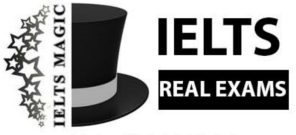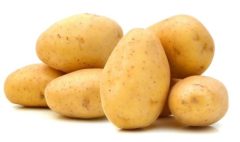PASSAGE 2 Viking Ireland
7 مرداد 1403 1403-05-17 20:53PASSAGE 2 Viking Ireland
READING PASSAGE 2
You should spend about 20 minutes on Questions 14–26, which are based on Reading Passage 2 below.
Viking Ireland
A recent excavation in Dublin challenges long-held ideas about when the Scandinavian raiders known as Vikings arrived in Ireland
A When Irish archaeologists working under Dublin’s South Great George’s Street unearthed the remains of four young men buried with fragments of Viking shields, daggers and personal ornaments, the excavation appeared to be simply more evidence of the Viking presence in Ireland. At least 77 Viking burial sites have been found across the basis of artefacts that accompanied them, and the South Great George’s Street burials seemed to be further examples. Yet when archaeologist Linzi Simpson sent the remains for analysis, the tests showed that men had been buried in Irish soil years, or even decades, before the accepted date for the establishment of the first year-round Viking settlement in Dublin.
B Simpson’s findings are now adding new weight to an idea gaining growing acceptance – that instead of a sudden, calamitous invasion, the arrival of the Vikings in Ireland started with small-scale settlements and trade links connected Ireland with northern Europe.
And, further, that those trading contacts may have occurred generations before the violent raids described un contemporary texts, works written by monks living in isolated monasteries. These were often the only places where literate people lived and were especially targeted by Viking raiders for their food suppliers and treasures.
Scholars are continuing to examine the texts written by monks, but are also considering the limitations of using them. ‘Most researches accept now that the raids were not the
first contact, as the old texts suggest,’ says Viking expert Gareth Williams. ‘How did the Vikings know where all those monasteries were? It’s because there was already contact. They were already trading before those raids happened.’
C Although the earlier dates for a Viking presence in Dublin that have been identified by Simpson and independent archeologists differ from the later dates by only a few decades, when combined with other evidence, they are challenging the chronology of Viking settlement in Ireland. Since the 1960s, archaeologists have been gathering information about the mid-ninth-century settlement that lay under the sidewalks of Fishamble Street in Dublin. According to archeologist Ruth Jonson, the Vikings started with sporadic summer raids, but after some years of profitable plunder, they decided to stay, and built settlements for the winter.
D Carbon dating, which measures the age of organic materials based on the amount of radioactive carbon 14 remaining in a specimen, usually gives a range of likely dates for the time of death. The older the material, the wider the range. In the case of the four individuals excavated at the South Great George’s Street site, Simpson found that two of them had a 95 per cent probability of having died between 670 and 680, with a 68 percent probability of death occurring between 690 and 790. Thus, the entire most likely range was before the first documented arrival of Vikings in 795. A third individual lived slightly later, with a 95 per cent probability of having died between 680 and 882. The dates were not what Simpson had thought they would be. ‘These dates seem impossibly early and difficult to reconcile with the available historical and archeological sources,’ she says.
E The fourth individual excavated at South Great George’s Street was the most intact of the group, and revealed the most about the lives and hardships of Vikings at this time. A powerfully built man in his late teens or early 20s, he was approximately 1.70m. tall by the day’s standards, with the muscular torso and upper limbs that would have come from hard, ocean-going rowing. His bones showed streets associated with heavy lifting beginning in childhood. Unlike the three other men, he was not buried with weapons.
Like one of the other men found at the site, he had a congenital deformity at the base of his spine, perhaps indicating they were relatives. Carbon dating gave a wider range for his lifetime, showing a 95 per cent probability he died between 786 and 955.
F Tests were also carried out on the four South Great George’s Street men’s isotopic oxygen levels. Such tests indicate where a person spent their childhood based on a chemical signature left by groundwater in developing teeth. The results showed that the two men with the spinal had spent their childhood in Scandinavia. However, the other two had spent their childhoods in Ireland or Scotland, another sign of permanent settlement by Viking families and not just summertime raids by warriors.
G The evidence of an earlier-than-expected Viking presence in Ireland, based as it is on forensic tests conducted on a handful of burials, may seem slight. But seemingly small pieces of evidence can overturn well-established conventions in archaeology. Both Simpson and Johnson stress more excavations and tests will be needed before anyone can rewrite the history of Viking settlement, and such work is years away. Williams adds, ‘There are two possibilities raised by (Simpson’s) work. Either there was Viking activity earlier than we’ve realized in Ireland, or there is something in the water or soil in Dublin skewing the data, and both possibilities need further research.’ Nevertheless, Williams agrees with Simpson and others that the chronology of the Viking presence in Ireland is uncertain, and that they were possibly trading or raiding in Ireland before 795. ‘It’s a poorly documented part of history,’ says Williams. But before there was Viking settlement, there was this big trading zone in the North Sea. Did it extend to the Irish Sea? We don’t have any evidence to say that, but it could be just a question of time.’
Questions 14–19
Reading Passage 2 has seven sections, A–G.
Choose the correct heading for each section from the list of headings below. Write the correct number, i–vii, in boxes 14–19 on your answer sheet.
Example
Section A Answer ii
List of Headings
i A possible genetic link between the Vikings and the Irish
ii An assumed similarity with previous discoveries
iii The need for additional data
iv An insight into the lifestyle of a particular Viking
v Doubts about the truth of historical documents
vi A research technique providing unexpected information
vii The locations particular Vikings grew up
viii A decision to remain in Ireland for longer periods
14 Section B
15 Section C
16 Section D
17 Section E
18 Section F
19 Section G
Questions 20–23
Look at the following statements (Questions 20–23) and the list of experts below. Match each statement with the correct expert, A, B or C.
NB You may use any letter more than once.
20 The Vikings were aware of the financial benefits of staying in Ireland.
21 Written accounts reporting when the Vikings arrived in Ireland may not be accurate.
22 The inconsistency in sets of data came as a surprise.
23 It may be the case that the archaeological evidence gathered so far is being affected by geological factors.
List of Experts
A Linzi Simpson
B Gareth Williams
C Ruth Johnson
Questions 24–26
Complete the summary below.
Choose ONE WORD ONLY from the passage for each answer.
The fourth Viking of South Great George’s Street
When the remains of the fourth Viking were excavated at South Great George’s Street, it became clear that they were of a male who was tall by 24 ……. of that time. Due to
strenuous physical activity, his 25 ……. as well as his arms were well developed, but
several of his bones indicated stresses that would have dated from his 26 ……. He also
had a genetic abnormality in his lower 27 ……. His burial differed from that of the other
three Vikings discovered at the stie, as no 28 ……. were included.







